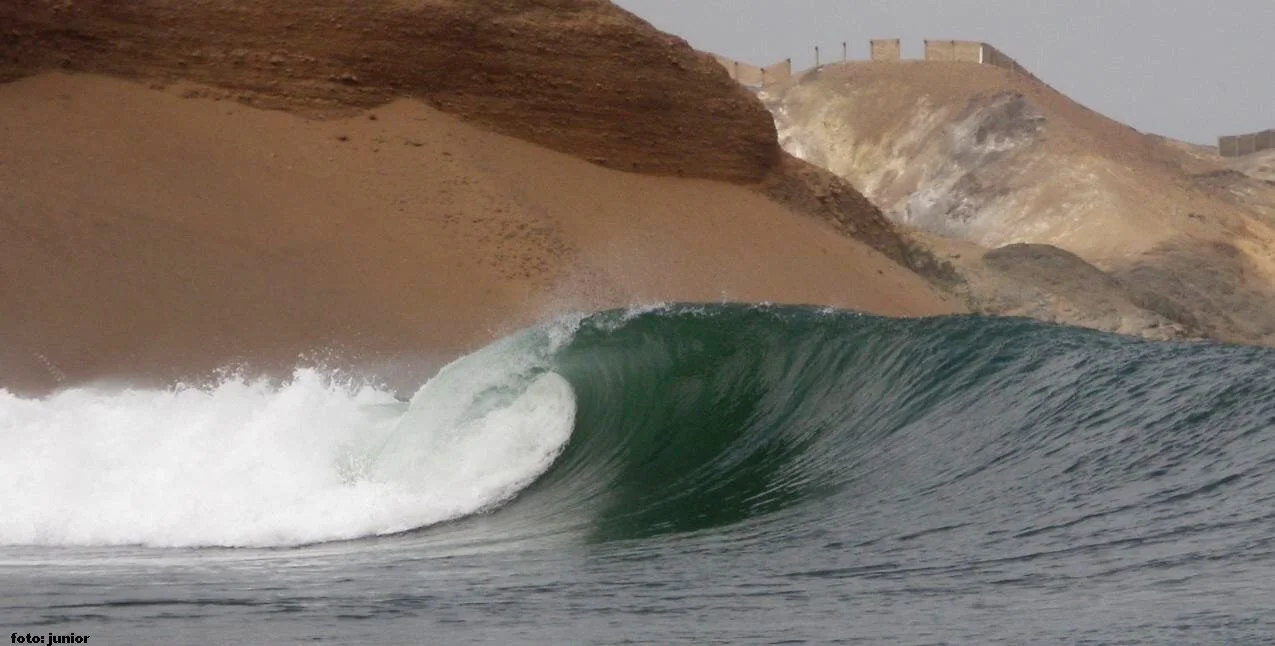The story behind uncovering the world-famous Chicama wave in mid-1960s.
Initially spotted from the air; then found by a two-car expedition.
A combined US-Peruvian effort of Lima-based surfers.
Grainy photo of Chuck Shipman (centre) & Carlos Barreda (far right) at Club Waikiki, Lima.
PeruNorth was delighted to receive the below communique from Hawaiian surfer, Chuck Shipman, who came to Lima for a tournament and then stayed for several months, getting to know Peru, its people and its waves:
‘I enjoyed your travel guide on surfing Chicama and thought you might be interested in how that name became associated with the legendary point surf.
On three overflights in 1965 and 1966, I saw something like your surf photos through my commercial airline window. I knew exactly what I was looking for and I found it!
I had a big map onboard, and the largest name on that particular map of the area we were flying over was "Chicama".
The Chicama Valley and River, of course, are actually far to the south of the legendary 4 km cape, which is near Puerto Malabrigo. However, "Chicama" had a cachét that "Malabrigo" seemed to lack.
Several organized expeditions to the area failed to find it in 1966. There were no highway signs and the only roads to the shore were through sugar fields that were always being moved.
We did get to surf small Bermejo and big Pacasmayo, but it was windy and blown out. Wish I had my sailboard or kiteboard in those days.
Your photos are more typical, but I was lucky to have been flying during bigger swells.’
Chuck pointed us to a blog by another legendary Peruvian surfer, Carlos ‘Flaco’ Barreda, who takes up the story of how the wave was eventually discovered by car.
Carlos and five of his surfer friends got hold of two vehicles for the expedition: a Citroen 2CV (that wasn’t really up to the rigours of the journey!) and a VW Beetle.
They calculated from the timings of Chuck’s sighting by plane that this wonderful wave was located somewhere between Chimbote and Chiclayo, on Peru’s extensive Pacific coast, north of Lima.
The first night was spent at Bermejo beach, where the waves were surfable, but did not meet Chuck’s description.
The ‘Chicama Expedition’ members on Bermejo beach, with Carlos Barreda far right.
The next day, they continued north, checking the beaches along the way. They feared that Chuck may have seen Huanchaco from the air - as this has a left-hand break - not realising that it was already a known surf beach.
Nonetheless, they kept on their quest, and on arriving at the town of Paijan, 50 km north of Trujillo, conversations with locals were encouraging. There was a nearby beach Puerto Malabrigado, that sounded like it may be what they were looking for.
It was not easy to find Malabrigado, but when they did, the small group of surfing fanatics was euphoric. From their viewpoint in the village, they could see an endless series of waves, up to 2 m high, in perfect formation and lifted by an offshore wind.
Each wave never broke: it just accelerated and increased in size as it approached.
A view of Chicama’s consistent waves from Puerto Malabrigo.
They couldn’t wait to get in the water, and immediately discovered that the wave was as good to surf as it looked.
After several days of joyous surfing, the group returned to Lima and through their stories, photos and an 8mm film, news of the Chicama wave filtered out.
Despite being instrumental in creating the legend of Chicama’s surf wave, Chuck Shipman still has not surfed it!




